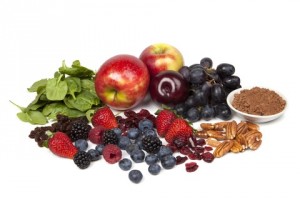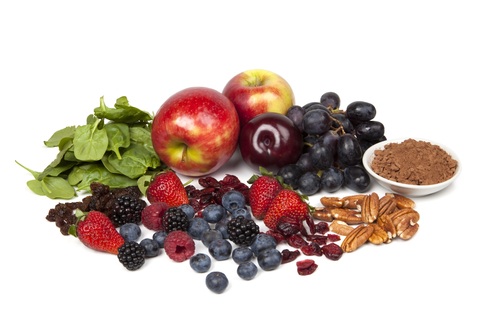 In recent years, free radicals have gained a great deal of attention in the press as by-products of natural processes within our bodies. They attack our cells and the DNA within them. At the same time, Antioxidant rich foods have similarly been gaining publicity for their ability to help neutralize free radicals and minimize their harmful effects.
In recent years, free radicals have gained a great deal of attention in the press as by-products of natural processes within our bodies. They attack our cells and the DNA within them. At the same time, Antioxidant rich foods have similarly been gaining publicity for their ability to help neutralize free radicals and minimize their harmful effects.
Learn which are the three main types of antioxidants and the best food sources to ensure an adequate intake.
Antioxidant Types
The word ‘Antioxidants‘ tends to be a sort of generic, ‘catch-all’ term. However, antioxidants are divided into three very specific types.
Plant Phytochemicals
These all come from plant sources in our diet. Plants, including the fruits and vegetables we eat, use phytochemicals within their structures as their own defence system against damage by free radicals. The Phytochemical group of antioxidants is sub-divided into the following groups:
- Flavonoids
- Carotenoids
- Allyl Sulfides
- Polyphenols
- Antioxidant Vitamins
These vitamins cannot be manufactured within our bodies, so we need to ensure that we eat good food sources of these every day. The most notable and important antioxidant vitamins are vitamins A, C, E, Folic acid and Beta-carotene.
Enzymatic Antioxidants
These must be synthesised within our bodies, it is not possible to include them in our diet. However, it is very important that we take in the trace metals that are a vital component in the process of synthesis so we need good food sources these or a suitable supplement. The most common are iron, manganese, copper and zinc.
Nutritional Advice from your Chiropractor
Many people do not know that Chiropractors can provide specialist advice on nutrition and supplementation. For example, they will be able to help you understand the dietary information about antioxidants, advise you on appropriate supplementation if you are getting inadequate minerals in your diet and help you get the best nutritional value from the foods that you eat by understanding whether eating a particular food raw or cooking it will maximise its antioxidant benefits.
Best Antioxidant Food Sources
Fruits:
- Citrus fruits such as oranges, lemons and limes are all good sources of vitamin C as are pineapples, tomatoes and Kiwi fruits.
- Berry fruits, particularly blackberries and any of the dark red or purple berries are rich sources of Vitamin C, plant phytochemical Carotenoids and minerals needed for the manufacture of enzymatic antioxidants.
Vegetables
- Dark green vegetables including broccoli and kale
- Legumes, particularly small red beans, kidney, pinto and black beans
- Sprouted seeds eaten raw in salads or cooked in stir fry dishes.
Herbs and Spices
- Fresh herbs from the kitchen garden including Oregano and Coriander or bought fresh spices like Ginger
- Dried herbs and spices such as Cinnamon or Cumin where fresh cannot be obtained
Nuts
- Peanuts are best avoided, but fresh, raw nuts without the addition of savoury coatings or salt are especially good, particularly Walnuts, Pecans and Hazelnuts
This list is by no means the definitive one. Other things to consider including are Organic green teas in unbleached teabags (or loose leafed), red grapes and red wine for the Resveratrol content – even freshly made coffee is rich in antioxidants.
One way of ensuring a good daily supply of all the natural antioxidants is to consume as many different types and colours of vegetables and fruits as you can each week. Include dark green vegetables, dark red and purple fruits and vegetables – and all the colours in between!

Published by